#Beaumarchais
Explore tagged Tumblr posts
Text
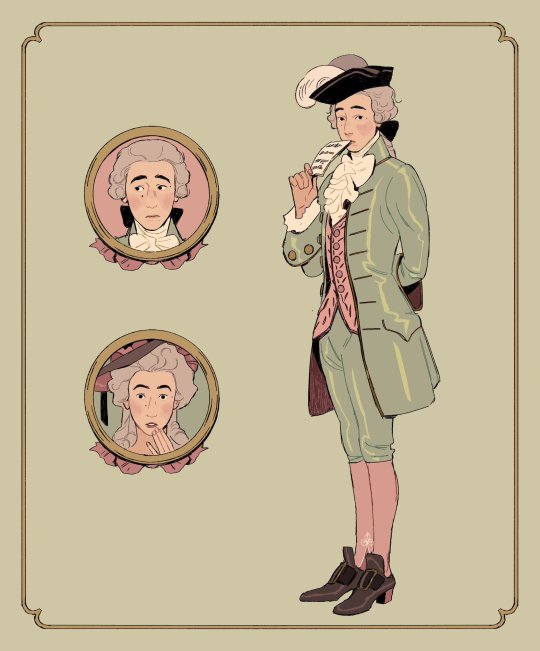

Le subterfuge de Chérubin
#le mariage de figaro#les noces de figaro#le nozze di figaro#Beaumarchais#mozart#Chérubin#cherubino#rosine d'almaviva#suzanne#theatre#opera#18th century#1770s#1780s#my art
20K notes
·
View notes
Text
the thing about Cherubino and Barbarina is that they really match each other’s freak
#le nozze di figaro#the marriage of figaro#cherubino#barbarina#wolfgang amadeus mozart#beaumarchais#lorenzo da ponte#opera
32 notes
·
View notes
Text
Watched the first episode of Franklin last night.
The usual dramatic liberties have been taken, of course, in things like condensing characters and events, but it has an authentic feel and shows a good deal of respect to its historical source material. The costumes and sets are just beautiful (we'll forgive a few wonky cravats and collars).
I'm surprised by how much I like Michael Douglas in the title role, though he's a little too serious most of the time. Since all the other characters are dialled to 11, it makes for a curious contrast since we're used to seeing Franklin as the stand-out wit. Hopefully he warms up!
Beaumarchais is delightfully camp, and Lafayette is entirely charming, spilling over with teenage enthusiasm and earnestness. Louis XVI tinkering at his workbench was a 11/10 detail. Vergennes is subtle and sensitive.
All in all, a very enjoyable viewing experience so far.
#my only silly gripe is that too many of the french characters speak good english 😅#franklin#franklin (apple tv)#benjamin franklin#beaumarchais#marquis de lafayette
55 notes
·
View notes
Text
Cherubino's the type of child to nag you non-stop at the pool "Are you watching? Are you wa— Are you— Are you watching? I'm going to do something REALLY COOL! 🙂" just for him to do a sort of pathetic handstand
#opera tag#Le Nozze di Figaro#Mozart#Le Mariage de Figaro#Beaumarchais#He would not survive a minute in this world without an ADHD diagnosis
32 notes
·
View notes
Text
while there are many wonderful parts of Jonathan Miller's production of Nozze at the Met I think the best part is little Rosina Jr. who periodically pops in and sits onstage for a bit.

the best part though, is that she gets brought onstage for Ricevete, o padroncina and stays for the rest of the third act. and yes, this does mean she watches the passive agressive argument going on between her parents, as well as Barbarina's, "remember what you said when you kissed me?"

but you know, I think watching your parents fight adds character
21 notes
·
View notes
Text
went from Da Ponte+Mozart's opera to Beaumarchais's original Marriage of Figaro, this is now a Marcellina stan account
11 notes
·
View notes
Photo

Dogs & Their Collars in the Age of Enlightenment
In medieval and Renaissance Europe, dogs were considered little more than 'machines' which performed certain tasks, such as guarding a home or tracking game, but this view changed significantly during the Age of Enlightenment (also known as the Age of Reason) of the 17th and 18th centuries.
The Age of Enlightenment was an intellectual movement among the upper-class intelligentsia, which encouraged a re-evaluation and reinterpretation of widely held beliefs concerning the human condition. Prior to the Protestant Reformation (1517-1648), the Catholic Church had shaped European interpretation of life and one’s place in the universe, but afterwards, individuals were encouraged to seek a personal relationship with God based on their own understanding of scripture and this led to greater freedom of spiritual and intellectual pursuits which eventually found expression during the Age of Enlightenment.
Among the many advances this period produced was a re-evaluation of the dog. The Church had declared that dogs were soulless beings and should not be treated with the same regard as humans who had been endowed with an immortal soul. One of the most significant thinkers of the Enlightenment, René Descartes (l. 1596-1650), the philosopher some cite as the "Father of the Enlightenment", decided to prove the Church’s claim true or false by dissecting dogs while they were still alive, even his wife’s pet dog and, finding no evidence of a soul, concluded the Church was correct.
Later thinkers, artists, and poets disagreed with Descartes, however, and featured the animals in their works, often excluding human subjects. Dog collars, which were previously utilitarian devices for controlling the animals, became ornate works of art. Collars were so valuable, in fact, that laws were enacted punishing people for the theft of a collar more severely than if they had stolen the dog itself. The Age of Enlightenment dramatically changed the way people viewed and treated dogs and eventually encouraged the development of societies dedicated to their safety, comfort, and well-being.
Dogs in Art
In 1434, the Flemish artist Jan van Eyck (l. c. 1390-1441) painted what is arguably his masterpiece, the Arnolfini Portrait, of a man and woman in a room with a dog. The two people, presumably a husband and his pregnant wife, seem to be in the midst of a serious discussion, but the small dog at their feet looks attentively out toward the viewer. The painting has long been praised for its intimacy and realism, and this dog is an important aspect of that. This dog has no concern at all for whatever drama may or may not be unfolding between the two humans; its attention is on the stranger - the person now viewing the painting - who has just walked in on this scene.
Impressive as the work is, no other artists chose to represent dogs in such an intimate and realistic manner again until the 18th century when paintings begin to regularly feature the upper class in the company of a favorite dog. The painting Miss Mary Edwards (1742) by the English artist William Hogarth (l. 1697-1764) shows the woman at her writing table stroking the head of her spaniel and A Woman with a Dog (1769) by French painter Jean Honore Fragonard (l. 1732-1806) catches a woman holding up her small white lapdog, wearing a blue-ribbon collar and leash, as though the viewer has just opened the door and surprised her. The dog in this painting, unlike in van Eyck's, takes no notice of the intruder and only has eyes for its mistress.
Dog collars in these paintings and many others, when they are shown, are often bands of gold or silver or, as in the case of Fragonard's piece, ribbon. In many of the Enlightenment paintings which feature dogs, the focus is clearly on the human subject with the dog playing a secondary role in the composition until one artist decided to elevate the dog in art and, in doing so, changed the way people saw dogs in their daily lives.
Continue reading...
21 notes
·
View notes
Text
Je me presse de rire de tout, de peur d’être obligé d’en pleurer.
- Beaumarchais
10 notes
·
View notes
Text


Plaque en hommage à : Beaumarchais
Type : Commémoration
Adresse : Hôtel Caron de Beaumarchais, 12 rue Vieille du Temple, 75004 Paris, France
Date de pose : Inconnue
Texte : Cet hôtel rend hommage à Pierre-Augustin Caron de Beaumarchais, (1732-1799). Plus célèbre sous le nom de Beaumarchais, l'écrivain vécut au 47 de la rue Vieille-du-Temple, dans l'Hôtel Amelot de Bisseuil. Il y écrivit en 1778 «Le Mariage de Figaro»
Quelques précisions : Pierre-Augustin Caron de Beaumarchais (1732-1799), le plus souvent connu sous le simple nom de Beaumarchais, est un écrivain français, principalement connu en France comme étant l'auteur du Barbier de Séville et du Mariage de Figaro, une comédie dont les thématiques préfigurent les revendications de la Révolution française et qui a donné lieu à la célèbre citation "Sans la liberté de blâmer, il n'est point d'éloge flatteur". Ses activités ne se limitent toutefois pas à la littérature : entré au service de la royauté, il mène différentes missions d'espionnage et d'assistance diplomatique, prenant par exemple part à la guerre d'indépendance américaine dans les années 1770. Bien qu'adhérant aux idéaux révolutionnaires, il connaît la tourmente en raison de ses richesses et de ses activités économiques, et est forcé de quitter la France pour préparer sa réhabilitation.
#individuel#hommes#commemoration#ecrivains#france#ile de france#paris#non datee#beaumarchais#pierre augustin caron de beaumarchais
2 notes
·
View notes
Text
can we PLEASE talk about this production of barber of seville? (Zurich Opera House 2001)
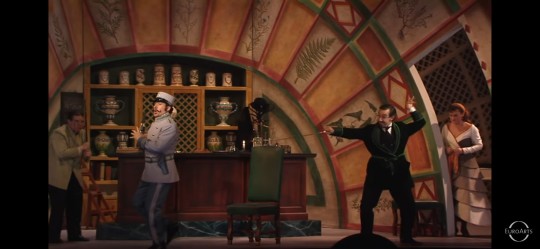



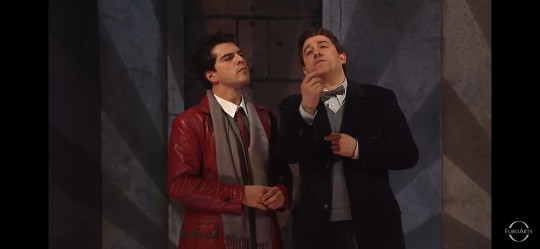
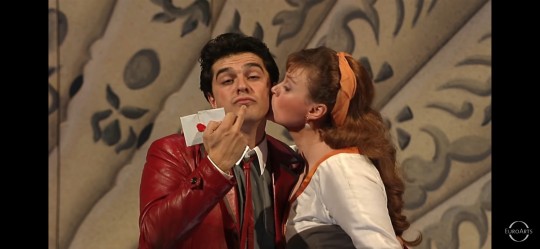
they're just unhinged
also, Figaro has a motorbike and Almaviva has a scooter

#operablr#opera tag#barber of seville#il barbiere di siviglia#rossini#gioachino rossini#beaumarchais
19 notes
·
View notes
Text

"Portrait de Paul-Guillaume Lemoine" dit "Le Romain" architecte de l'hôtel particulier de Beaumarchais par Joseph-Benoît Suvée (crica 1772-82) présenté sur les boiseries en chêne de la "Chambre du Prieur du Couvent des Prémontés" anciennement rue Hautefeuille (circa 1720) dans le parcours des Collections Permanentes du Musée Carnavalet, Le Marais, Paris, novembre 2024.
2 notes
·
View notes
Text

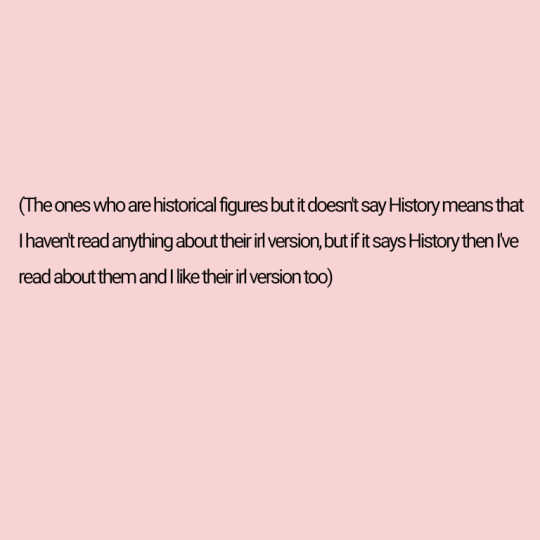

I don't really think I have a "type" but you could try guessing
#1776#1776 movie#1776 musical#i made america#amrev#amrev fandom#judge james wilson#james wilson#benjamin franklin#james madison#john dickinson#lyman hall#beaumarchais#William Temple Franklin#aaron burr#shuichi saihara
22 notes
·
View notes
Text
Quel est le personnage le plus con de la littérature française et pourquoi est-ce Almaviva ?
19 notes
·
View notes
Text
The bisexual duality of Cherubino.


Blushing babyboy twink vs "Why yes, I did fuck your wife. You want a turn too?"
67 notes
·
View notes
Text
RIP Cherubino you would have loved Gen Alpha brainrot
13 notes
·
View notes
Text
there's just something about figaro being so in love with susanna that itches a spot in my brain. even in the plays, he's honestly just as bad as cherubino but ever so slightly more adult about it.
#the marriage of figaro#the barber of seville#beaumarchais#opera#figaro no last name#figaro#susanna#they're genuinely so cute#and so bi coded too#scratch that#they just are bi#not even coded#le nozze di figaro#il barbiere di siviglia
8 notes
·
View notes